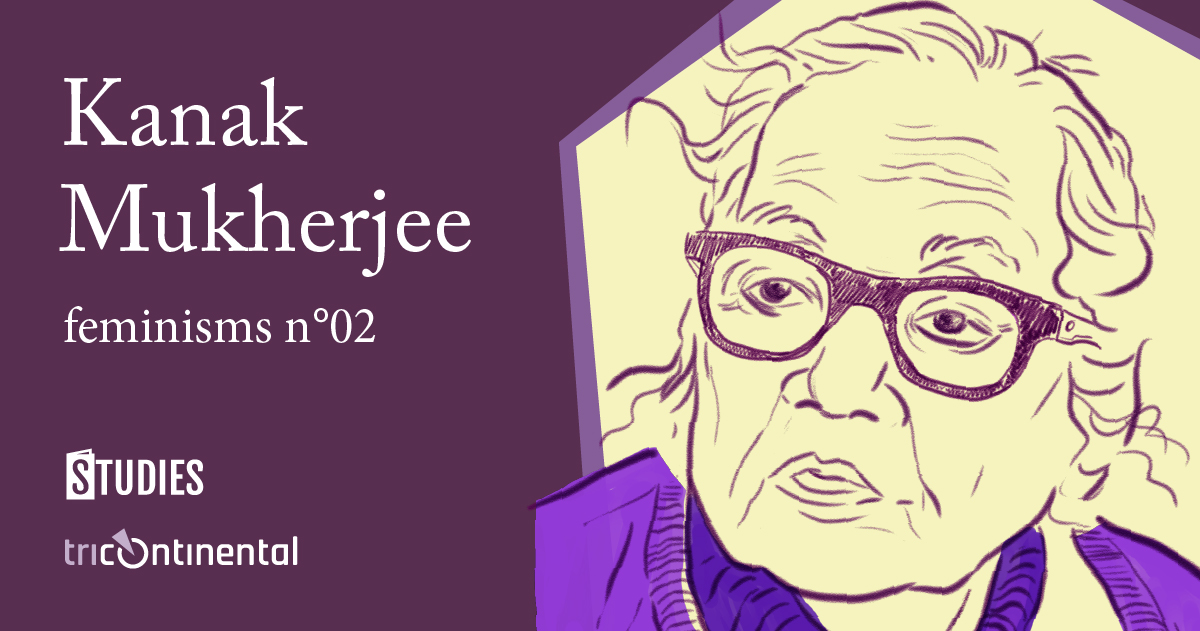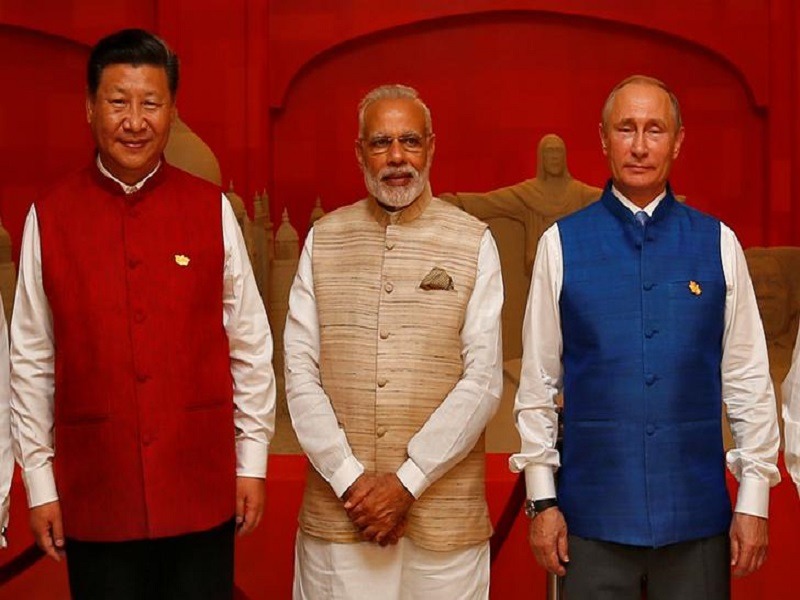BAD NEWS FOR THE WORLD: India, US are on pathway to contain China

 M. K. BHADRAKUMAR
M. K. BHADRAKUMAR
Indian Punchline
If the United States is a declining power and China’s rise inevitable in the Indo-Pacific; if Russia regards itself as a global power and is determined to bury the US-dominated rules-based order; if the defeat of the US and NATO in the Ukraine war has become a fait accompli; if Canada was encouraged by the US to fret and fume over alleged Indian involvement in Nijjar’s killing; if Israel’s bloodbath in Gaza is actually genocide — well, India’s policymakers haven’t heard any of this. That is the message coming out of the US-Indian 2+2 foreign and defence ministers meeting in New Delhi on November 10.
The big picture is that after audaciously claiming the mantle of leadership of the Global South as recently as in September, in a span of over two months, India is gliding over to the American camp as the US’ indispensable ally, even aspiring to be a “global defence hub” with Pentagon’s help.
The following were some of the takeaways at the 2+2 meeting:
- Maximisation of the scope of the Logistics and Exchange Memorandum Agreement, and identify steps to enhance the reach of the US naval vessels to Indian bases.
No doubt, the above is only the tip of the iceberg, while this extraordinary transition in Indian policies will largely remain behind closed-doors. The US seems supremely confident that India is ready to enter into an exclusive alliance, something that New Delhi never sought with any big power. What is the offer that the Biden Administration has made to India that the latter cannot refuse?
Clearly, such a massive shift in India’s military policies needs to be co-related with the fundamental postulates of foreign policy. That said, curiously, call it “bipartisan consensus” or whatever, India’s main opposition party apparently couldn’t care less about the shift. This is not surprising. The shift is actually about a nascent India-US alliance to counter China — and that is a policy front where it is difficult to choose between Tweedledum and Tweedledee.
To be sure, both Russia and China understand that Indian foreign policy is transitioning. But they pretend not to notice and would hope it is an aberration. At any rate, neither Russia nor China can stop India on its tracks. Their capacity to leverage Indian policies has dramatically shrunk — Moscow’s in particular — in the contemporary security environment.
The heart of the matter is that India is not ecstatic about the growing multipolarity in the world order. India is a beneficiary of the “rules-based order” and feels far more comfortable with a bipolar world order where multipolarity, if at all, remains a fringe phenomenon while the US’ pre-eminence will continue to prevail for decades to come. Such a paradigm is perceived as advantageous for India to navigate its pathway toward checking China’s hegemonic instincts while also optimally developing its own comprehensive national power. It is an ambitious agenda which is risky too, as policies change in Washington as presidents come and go and American interests get redefined and priorities change.
Today, however, the Indian willingness to align with the US is more evident than ever before. The animus against China’s rise was palpable at the 2+2 meeting. India has cast away any residual pretensions and is shifting toward an openly adversarial relationship with China. The QUAD has become an important locomotive. To be sure, a Chinese response can be expected — when or in what form, time will tell.
This is only possible because Delhi feels reasonably assured that Washington’s Indo-Pacific focus remains intact under the Biden Administration despite growing engagement with China. Of course, an inflection point is arising as Chinese President Xi Jinping will make his first trip to the US in five years and a summit meeting with President Biden has been meticulously prepared, which both sides hope will be productive and make the Sino-American relationship more predictable.
The three regional issues that figured prominently at the 2+2 were Afghanistan, Ukraine and the Palestine-Israel conflict. The Joint Statementdevoted a separate paragraph with the sub-title Afghanistan, which implicitly accused the Taliban rulers of not adhering to their “commitment to prevent any group or individual from using the territory of Afghanistan to threaten the security of any country.”
The joint statement goes on to pointedly recall UNSC Resolution 2593 (2021), which specifically “demands that Afghan territory not be used to threaten or attack any country or to shelter or train terrorists, or to plan or finance terrorist attacks.”
Delhi is making a radical departure from its attempts to constructively engage with the Taliban rulers. One reason could be intelligence inputs to the effect that Afghanistan is once again becoming a revolving door for international terrorist groups.
A second possibility could be that the US and India share a sense of exasperation over the Taliban’s growing proximity with China and the spectre of Afghanistan turning into a hub of the Belt and Road Initiative. Beijing’s plan to build a road connecting Afghanistan via Wakhan Corridor is a game changer in geo-strategy which is profoundly consequential. Anything that relates to the security of Xinjiang cannot but be a matter of incessant interest to Delhi.
The 2+2 joint statement signals a renewed US-Indian convergence on Afghanistan. How far this would translate as proactive moves is a moot point. Notably, the US and its allies are also exploiting Russia’s preoccupations with the conflict in Ukraine to double down on their post-cold war strategy to roll back Russian influence in Afghanistan. Moscow senses that it is losing ground in its backyard.
When it comes to Ukraine and the Palestine-Israel conflict, what emerges is that the US and Indian sides have succeeded in harmonising their respective positions on these crucial regional conflicts. In reality, Delhi is shedding its strategic ambivalence and moving towards the US position. This comes out in the strokes in the joint statement by what it says and what it doesn’t. Thus, on Ukraine, Russia’s attritional war has “consequences predominantly affecting the global South.” This apart, Moscow can learn to live with the 2+2 formulation on the Ukraine war.
As regards the West Asian situation, the joint statement voices vehement support for Israel’s fight against “terrorism”. But here, again, India refuses to call out Hamas. Nor is India endorsing Israel’s war on Hamas, leave alone pre-judge its chances of success. Most important, the joint statement omits any reference to Israel’s so-called “right to self-defence”, a mantra that is constantly on Biden’s lips.
India cannot possibly call the Gaza war an act of “self defence” when Israel has unleashed such a brutal military operation against hapless civilians and razed Gaza City to the ground — reminiscent of the joint British-American aerial bombing attack on the city of Dresden, the capital of Saxony, during World War II on the horrific night of 9-10 March 1945 killing over 25000 German people.
Perhaps, all these diplomatic peregrinations through the valley of death could be better understood against the backdrop of the intense back channel dealings involving Hamas leadership in regional capitals in which Biden administration would have high stakes and is a participant.
 Ambassador MK Bhadrakumar was a career diplomat for three decades in the Indian Foreign Service with multi-year assignments in the former Soviet Union, Pakistan, Iran, Afghanistan and Turkey. MK writes extensively on the geopolitics of Eurasia, China, West Asia and US strategies. He is a columnist at The Cradle, writes a popular blog called Indian Punchline, and is a syndicated columnist worldwide.
Ambassador MK Bhadrakumar was a career diplomat for three decades in the Indian Foreign Service with multi-year assignments in the former Soviet Union, Pakistan, Iran, Afghanistan and Turkey. MK writes extensively on the geopolitics of Eurasia, China, West Asia and US strategies. He is a columnist at The Cradle, writes a popular blog called Indian Punchline, and is a syndicated columnist worldwide.Print this article
The views expressed herein are solely those of the author and may or may not reflect those of The Greanville Post. However, we do think they are important enough to be transmitted to a wider audience.
![]()
Unfortunately, most people take this site for granted.
DONATIONS HAVE ALMOST DRIED UP…
PLEASE send what you can today!
JUST USE THE BUTTON BELOW
Did you sign up yet for our FREE bulletin? This work is licensed under a Creative Commons Attribution-NonCommercial 4.0 International License ALL CAPTIONS AND PULL QUOTES BY THE EDITORS NOT THE AUTHORSU.S. Government Now Goads India to Invade ChinaBe sure to circulate this article among friends, workmates and kin.
Eric Zuesse
|
| Did you sign up yet for our FREE bulletin? It's super easy! Sign up to receive our FREE bulletin. Get TGP selections in your mailbox. No obligation of any kind. All addresses secure and never sold or commercialised. [newsletter_form] |
![]() This work is licensed under a Creative Commons Attribution-NonCommercial 4.0 International License
This work is licensed under a Creative Commons Attribution-NonCommercial 4.0 International License
Lessons to Learn from Kerala
Vijay Prasad
CONSORTIUM NEWS
Indian farmers and agricultural workers have crossed the hundred-day mark of their protest against the government of Prime Minister Narendra Modi. They will not withdraw until the government repeals laws that deliver the advantages of agriculture to large corporate houses. This, the farmers and agricultural workers say, is an existential struggle. Surrender is equivalent to death: even before these laws were passed, more than 315,000 Indian farmers had committed suicide since 1995 because of the debt burden placed on them. (Tricontinental: Institute for Social Research)
Over the next one and a half months, assembly elections will take place in four Indian states (Assam, Kerala, Tamil Nadu and West Bengal) and in one union territory (Puducherry). There are 225 million people who live in these four states, which would, if measured by itself, make this area the fifth largest country in the world after Indonesia. Prime Minister Modi’s Bharatiya Janata Party (BJP) is not a serious contender in any of these states.
In Kerala (population 35 million), the Left Democratic Front has been in the government for the past five years, during which it has confronted a number of serious crises: the aftereffects of Cyclone Ockhi in 2017, the Nipah virus outbreak of 2018, the floods of 2018 and 2019, and then the Covid-19 pandemic. As a result, Kerala’s health minister, K.K. Shailaja, has earned the nickname the “Coronavirus Slayer” because of the state’s rapid and comprehensive approach to breaking the chain of infection. All polls indicate that the Left will return to the government, breaking an anti-incumbency trend in the state since 1980.
To better understand the great gains made by the Left Democratic Front government over the past five years, I spoke to Kerala’s Finance Minister T. M. Thomas Isaac, a Central Committee member of the Communist Party of India (Marxist).
Isaac begins by telling me that the switch back and forth between the Left Front and the Right Front, as he called it, has cost Kerala a lot of social advancement.
Isaac:
“If the Left wins again, it will have been in power continuously for 10 years. That is a sufficiently long period to leave a very substantial imprint upon Kerala’s development process.”
Vijay Prashad: What would the alternative general orientation of the Left’s approach toward Kerala’s development look like?
Isaac:
“It’s a kind of hop, step and jump. The hop, the first stage, is redistributive politics. Kerala has been very noted for that. Our trade union movement has succeeded in having significant redistribution of income. Kerala has the highest wage rates in the country. Our peasant movement has been able to redistribute landed assets through a very successful land reform program. Powerful social movements which pre-date even the Left movement in Kerala, [and] whose tradition the Left has carried forward, have pressurised successive governments which have been in power in Kerala to provide education, healthcare, [and for the] basic needs of everyone. Therefore, in Kerala, an ordinary person enjoys a quality of life which is much superior to the rest of India….
But there is a problem with this process. Because we have to spend so much on the social sector, there won’t be sufficient money [or] resources for building infrastructure. So [after] a program of social development spread over more than half a century, there’s a serious infrastructure deficit in Kerala.
Our present government has been very remarkable in meeting the crises, ensuring that there is no social breakdown, ensuring that nobody in Kerala would go hungry, and [that] everybody will get treatment during Covid times and so on.”
But, he said, the Left did something more remarkable.
Isaac:
“What the government did was to build the state’s infrastructure and begin to pivot to another economic foundation. The amount needed to upgrade the infrastructure is staggering, about Rs. 60,000 crores (or $11 billion).”
How does a Left government raise the funds to finance this kind of infrastructural development? He said that Kerala, as a state within India, cannot borrow beyond a certain limit, so the Left government set up instruments such as the Kerala Infrastructure Investment Fund Board (KIIFB). Through the Board, the government was able to spend Rs. 10,000 crores ($1.85 billion) and produced a remarkable change in the infrastructure. After the hop (redistribution) and infrastructural development (step), comes the jump.
Isaac:
“The jump, is the program that we have placed before the people. Now that infrastructure is there, [such as] transmission lines, assured electricity, industrial parks for investors to come and invest. We will have K-FON [Kerala-Fibre Optic Network], a super-highway of internet owned by the state, which is available to any service provider. [It ensures] equal treatment to everybody; nobody will have an [undue] advantage. And we are going to provide internet to everybody. It is the right of every individual. All the poor are going to get broadband connectivity for free.
All of this has provided a background for us to take the next big jump. That is, we now want to change the economic base of our economy. Our economic base is commercial crops, which are in serious crisis because of opening up [to ‘free trade’], or labor-intensive traditional industries, or very polluting chemical industries and so on. Therefore, we realize now, industries which are of our core competence would be knowledge industries, service industries, skill-based industries and so on. Now how do you make this paradigm shift from your traditional economic base to the new [one]?”
Because of the shift to the digital platform economy, Kerala will now develop its IT industry with the immense advantages of the state’s high literacy rates as well as 100 percent state-funded internet connectivity that will soon be available to the entire population.
This, Isaac said, is going to have a tremendous impact upon women’s employment. Kerala’s Left government will restructure higher education to promote innovation and deepen Kerala’s history of cooperative production (the example here is the Uralungal Labour Contract Cooperative Society, which recently rebuilt an old bridge in five months, seven months ahead of schedule).
Kerala, he said, aims to go beyond the paradigms of the Gujarat Model (high rates of growth for capitalist firms, but little social security and welfare for the people), the Uttar Pradesh Model (neither high growth nor social welfare), and the model that would provide high welfare but little industrial growth. The new Kerala project would go for high but managed growth and high welfare.
Isaac:
“We want to create in Kerala [the basis for] individual dignity of life, security and welfare [which requires both industry and welfare]… We are not a socialist country. we are part of Indian capitalism. But in this part, within the limitations, we shall design a society which will inspire all progressive-thinking people in India. Yes, it is possible to build something different. That’s the idea of Kerala.”
Kerala’s Powerful Social Movements
A key element in the Kerala Model is the powerful social movements that grip the state. Amongst them is a mass front of the hundred-year-old communist movement and the All-India Democratic Women’s Association (AIDWA), which formed 40 years ago in 1981 and which has a membership in excess of 10 million women.

One of the founders of AIDWA was Kanak Mukherjee (1921-2005). Kanakdi, as she was called, joined the freedom movement at the age of 10 and never stopped fighting to emancipate our world from the chains of colonialism and capitalism. In 1938, at the age of 17, Kanakdi joined the Communist Party of India, using her immense talents to organize students and industrial workers.
In 1942, as part of the anti-fascist struggle, Kanakdi helped found the Mahila Atma Raksha Samiti (Women’s Self Defence Committee’, which played a key role in helping those devastated by the Bengal Famine of 1943 — a famine created by imperialist policy that resulted in as many as three million deaths. These experiences deepened Kanakdi’s commitment to the communist struggle, to which she devoted the rest of her life.
To honor this pioneer communist, Tricontinental: Institute for Social Research dedicated our second feminisms study (Women of Struggle, Women in Struggle) to her life and work. Professor Elisabeth Armstrong, who was a key contributor to this study, recently published a book on AIDWA, which is now out as a paperback from LeftWord Books.
Today, organizations such as AIDWA continue to lift the confidence and power of working-class and peasant women, whose role has been considerable in Kerala and in the farmer’s revolt, as well as in struggles across the world. They speak out not only about their suffering but also about their aspirations, their great dreams of a socialist society – dreams that need to be built alongside other instruments such as the Left Democratic Front government in Kerala.
This article is from Tricontinental: Institute for Social Research.
[premium_newsticker id="211406"]
The views expressed are solely those of the author and may or may not reflect those of The Greanville Post
YOU ARE FREE TO REPRODUCE THIS ARTICLE PROVIDED YOU GIVE PROPER CREDIT TO THE GREANVILLE POST
VIA A BACK LIVE LINK.
Massive Indian farmer uprising against neoliberalism explained
Anya Parampil
THE GRAYZONE
Massive Indian farmer uprising against neoliberalism explained
It was inevitable that sociopathic neoliberalism would eventually detonate the biggest strike in human history.
Red Lines host Anya Parampil speaks with Prasanth Radhakrishnan, a New Delhi based journalist with Newclick.in and People's Dispatch, about the historic farmer strike currently sweeping India. Radhakrishnan explains why farmers are rising up, how they are organized, and how the neoliberal government of Narendra Modi has responded to the movement. Just one day after this interview, the Modi government raided the offices of Newsclick.in and detained its editors in what has been denounced as an act of intimidation against critical media. Learn more: https://bit.ly/3pgo69y ||| The Grayzone ||| Find more reporting at https://thegrayzone.com
• ADDENDUM •
PBS report corroborates The Grayzone account
[premium_newsticker id="211406"]
The views expressed are solely those of the author and may or may not reflect those of The Greanville Post
YOU ARE FREE TO REPRODUCE THIS ARTICLE PROVIDED YOU GIVE PROPER CREDIT TO THE GREANVILLE POST
VIA A BACK LIVE LINK.













